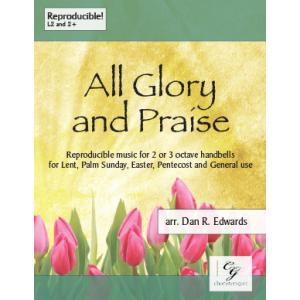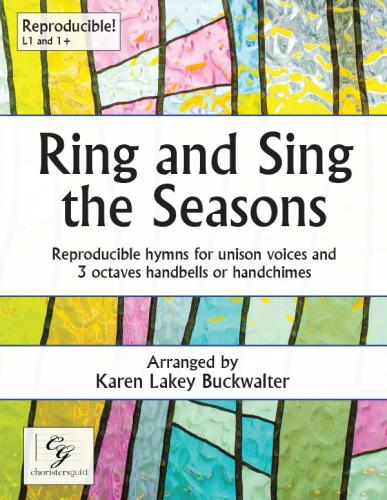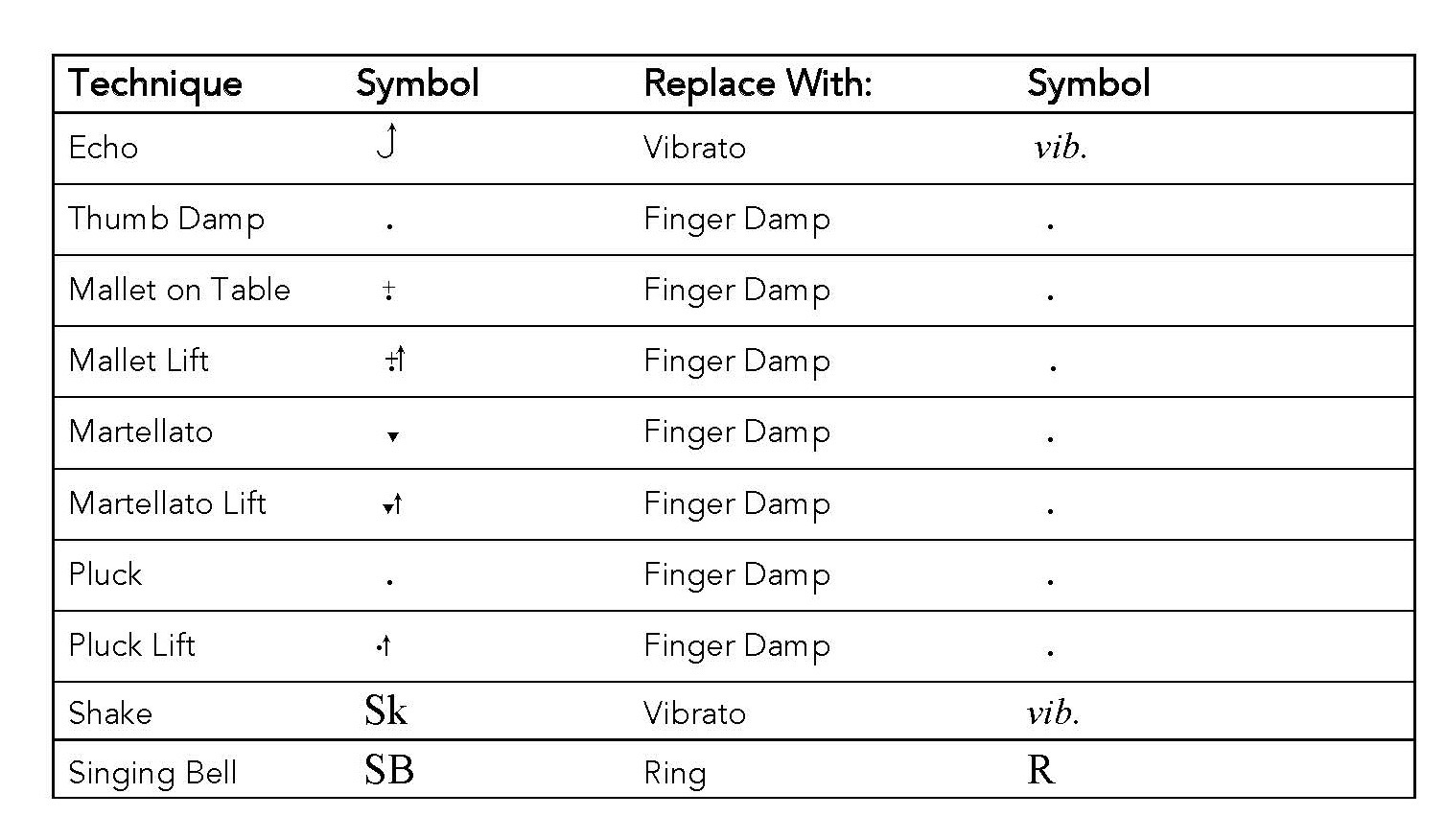 Lent is here and Easter is around the corner. ChimeWorks has some great repertoire ideas. It’s always fun to shop for music at the beginning of a new budget year as you are not feeling the pressure of eliminating your resources. One smart way of stretching your budget dollars throughout the year is to purchase collections which offer a variety of music bundled together at a discounted price.
Lent is here and Easter is around the corner. ChimeWorks has some great repertoire ideas. It’s always fun to shop for music at the beginning of a new budget year as you are not feeling the pressure of eliminating your resources. One smart way of stretching your budget dollars throughout the year is to purchase collections which offer a variety of music bundled together at a discounted price.
With the thought of Lent, Holy Week and Easter happening over the next five weeks, we offer the considerations below to get you through this holy time. Many of the resources suggested require one copy to be purchased with unlimited photocopying for your organization’s use. For those collections that require a minimum purchase of five, the understanding is that you will order as many copies as you plan to use for your ensemble. For example, a three octave choir with 11 ringers often uses 7 copies – one for the director and the other 6 copies in binders shared by ringers. Licenses are non-transferrable.
All of the suggestions below are available for immediate purchase and digital download on the ChimeWorks site. No waiting and no shipping charges!
 All Glory and Praise (2 – 3 Octaves) (3 – 5 Octaves)
All Glory and Praise (2 – 3 Octaves) (3 – 5 Octaves)
• Author/Composer/Arranger: Dan R. Edwards
• Level: Level 2, Level 2+
• Topic: Easter, General, Lent, Palm Sunday, Pentecost
• Use Caution with Techniques and/or Tempo: Caution
Tune sources: American spiritual; ST. THEODULPH; ELLACOMBE; EASTER HYMN; Jean Sibelius; Camille Saint-Saëns; BROTHER JAMES’ AIR; MORECAMBE • Contents: Jesus Walked This Lonesome Valley, Palm Sunday Processional (with All Glory, Laud and Honor and Hosanna, Loud Hosanna); Easter Triumph (incorporating Christ the Lord Is Risen Today); The Lord Is My Shepherd; Spirit of God, Descend Upon My Heart • Levels 2 and 2+ • Ring in the spring with this collection of seasonal favorites carefully selected to highlight Palm Sunday, Easter, as well as other special Sundays in the spring. The selections will be meaningful additions to worship, and can be mastered with minimal rehearsal time.

All Things Bright and Beautiful (2 – 3 Octaves) (3 – 5 Octaves)
• Author/Composer/Arranger: Cathy Moklebust
• Level: Level 1+, Level 2, Level 2+
• Topic: Christmas, Communion, Easter, General, Lent, Palm Sunday
• Use Caution with Techniques and/or Tempo: Caution
Cathy Moklebust’s reproducible collection contains several well-known hymn tune arrangements and original compositions for use during various seasons of the church year. Two of the pieces include instrumental parts. Published in compatible editions for 2-3 and 3-5 octaves, this budget-stretching reproducible collection will be a great addition to the libraries of church handbell choirs. Contents: All Things Bright and Beautiful; All Glory, Laud and Honor; God, Who Stretched the Spangled Heavens (Brethren, We Have Met to Worship); Calming Peace (Prayer for Kristin); Thee We Adore, O Hidden Savior; Kyrie, Processional on All Glory, Laud and Honor; Now the Green Blade Rises (Sing We Now of Christmas); Christ the Lord Is Risen Today (From the East the Donkey Came)
 God Reigns, Let Earth Be Glad (2 – 3 Octaves) (3 – 5 Octaves)
God Reigns, Let Earth Be Glad (2 – 3 Octaves) (3 – 5 Octaves)
• Author/Composer/Arranger: Anna Laura Page, Bill Ingram, Cathy Moklebust, Kevin McChesney, Sandra Eithun
• Level: Level 1, Level 1+, Level 2
• Topic: General, Lent, Pentecost
• Use Caution with Techniques and/or Tempo: Caution
The collection will be excellent for developing choirs as well as more experienced groups who need music they can learn quickly. Includes: Fairest Lord Jesus; Blessed Assurance; This Is My Father’s World; Lamb of God, Most Holy and Christians, We Have Met to Worship (Holy Spirit, Ever Dwelling
Tune sources: CRUSADER’S HYMN; ASSURANCE; TERRA PATRIS; O LAMM GOTTES, UNSCHULDIG; HOLY MANNA
 Keep It Simple 2 (2 Octaves) (3 Octaves)
Keep It Simple 2 (2 Octaves) (3 Octaves)
• Author/Composer/Arranger: Lloyd Larson
• Level: Level 1
• Topic: General, Lent, Praise, Transfiguration
• Use Caution with Techniques and/or Tempo: Caution
Lloyd Larson’s successful series Keep It Simple was created with the beginning choir in mind, these are readily accessible arrangements now available in both a new 2-octave version, and a 3-octave version. Full, lush and dynamic chords characterize these carol and hymn settings. Each selection is ideal for lesser experienced groups as well as ensembles needing to prepare selections with limited preparation time.

Ring and Sing the Seasons (3 Octaves)
• Author/Composer/Arranger: Karen Lakey Buckwalter
• Octaves Used – Select One: 3 Octaves
• Level: Level 1, Level 1+
• Topic: Christmas, Easter, General, Lent, Palm Sunday
• Options: Voice
Ring and Sing the Seasons is a reproducible collection comprised of both seasonal and general use hymn arrangements. The arrangements feature very simple rhythms and chords for handbells or handchimes, and unison vocal parts. Also included is an original processional, composed of layered ostinato patterns, with alternate texts for General, Christmas, Palm Sunday and Easter use. In her preface, Karen Lakey Buckwalter writes, “Having served 38 years in full time music ministry, I realized some of the most joyful moments were convincing choirs of all ages that they could ring and sing simultaneously.” One also has the option of having a soloist or vocal choir sing the hymn tune accompanied by the handbell or handchime choir. Separate vocal pages are included for the convenience of non-ringing singers. Contents: The Bells of Christmas; Christians, We Have Met to Worship; God, Who Made the Earth and Heaven; He Is Born; I Want Jesus to Walk with Me; Processional; That Easter Day with Joy Was Bright; This Is My Father’s World
 Ring Around the Year (3 – 5 Octaves)
Ring Around the Year (3 – 5 Octaves)
• Author/Composer/Arranger: Anna Laura Page, Cathy Moklebust, Kevin McChesney, Margaret R. Tucker, Sondra K. Tucker, Susan Geschke, Valerie W. Stephenson
• Level: Level 2
• Topic: Advent, All Saints/All Souls, Baptism, Christmas, Easter, General, Lent, Palm Sunday, Pentecost, Thanksgiving
• Use Caution with Techniques and/or Tempo: Caution
“Ring Around the Year” provides wonderful handchime music for use throughout the year. Most of the pieces are also suitable for general, non-seasonal use. The seven titles in this collection are written for 3, 4, or 5 octaves. This reproducible collection is designed to meet the needs of handchime choirs by helping to stretch their music budgets. With the purchase of this collection, the original purchasing organization (church, school, or community ensemble) is granted permission to make copies as needed for their ringers.

Reproducible Rings II
(2 – 3 Octaves) (3 – 5 Octaves)
• Author/Composer/Arranger: Lloyd Larson
• Level: Level 2
• Topic: Easter, Holy Week, Lent, Patriotic, Pentecost, Transfiguration
Arranged with the volunteer handbell ringer in mind, these eight hymn settings by Lloyd Larson are quickly learned and ready to perform with limited preparation time. Engaging settings of familiar hymn tunes guarantee broad appeal to both ringers and listeners. Includes: Ah, Holy Jesus; All Glory, Laud and Honor; America The Beautiful, Fairest Lord Jesus, I Know That My Redeemer Lives; Spirit of God, Descend Upon My Heart; The Day of Resurrection and What Wondrous Love Is This










 Slide the forefinger to the top area of the handchime and place the finger pad in the center of the tine slot and ring the chime.
Slide the forefinger to the top area of the handchime and place the finger pad in the center of the tine slot and ring the chime.